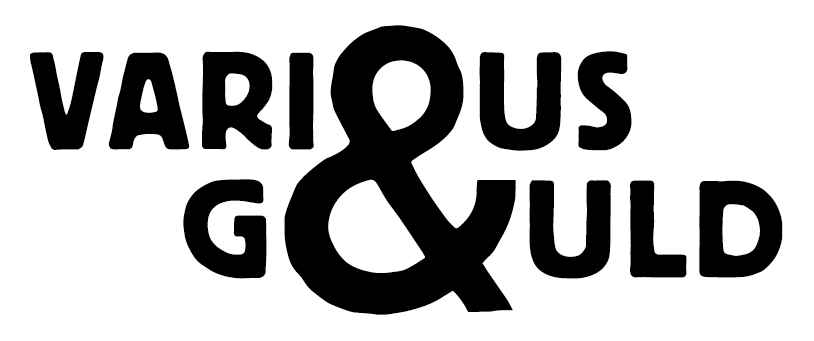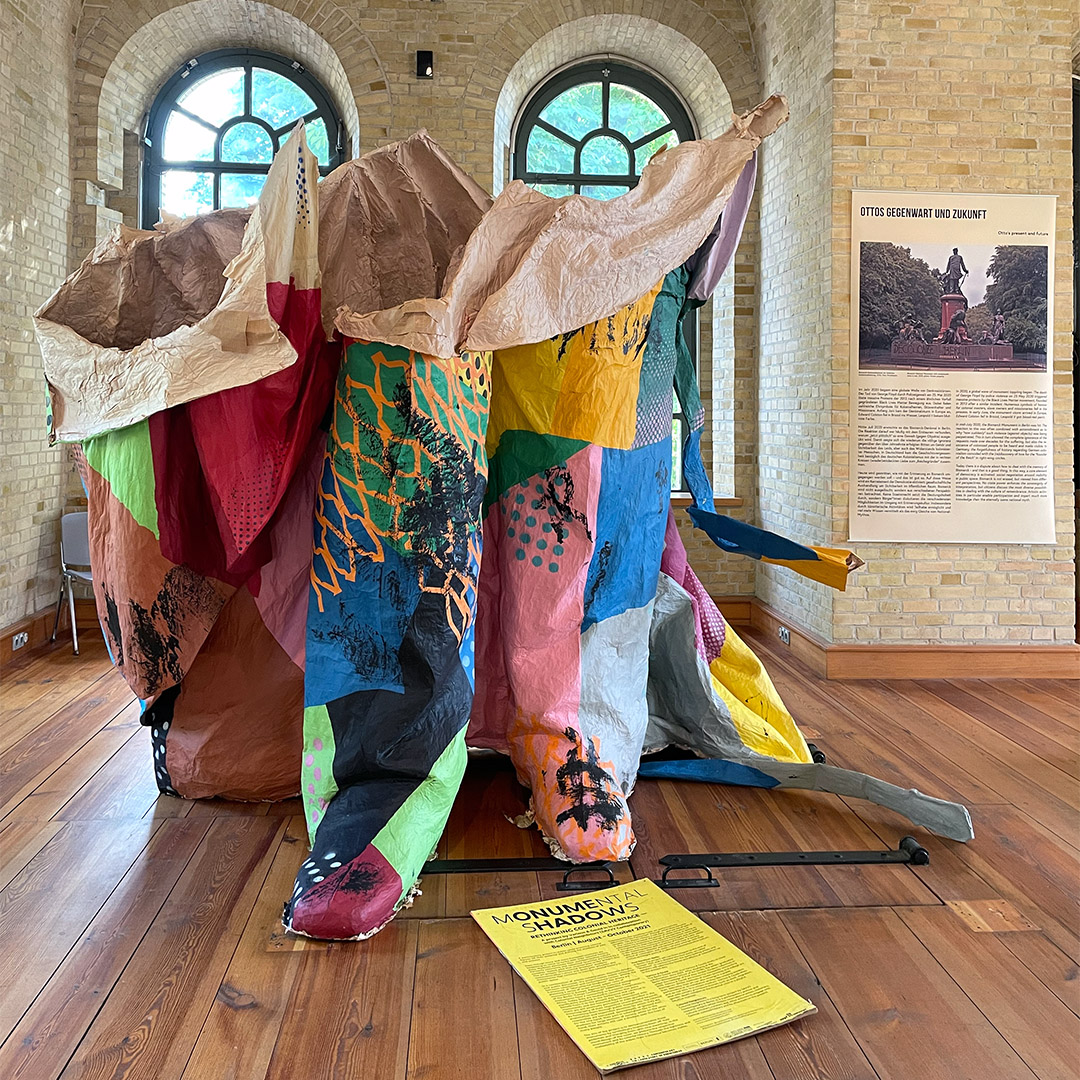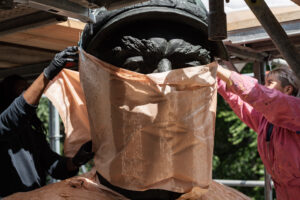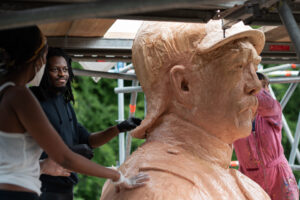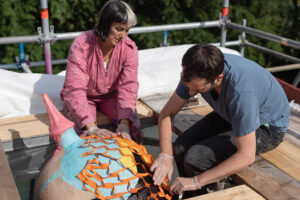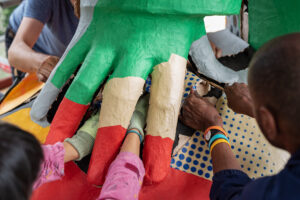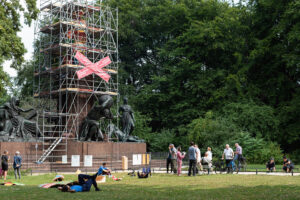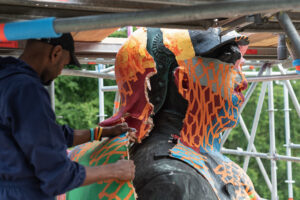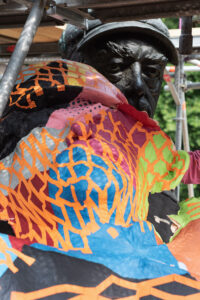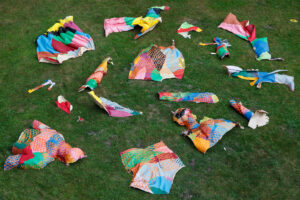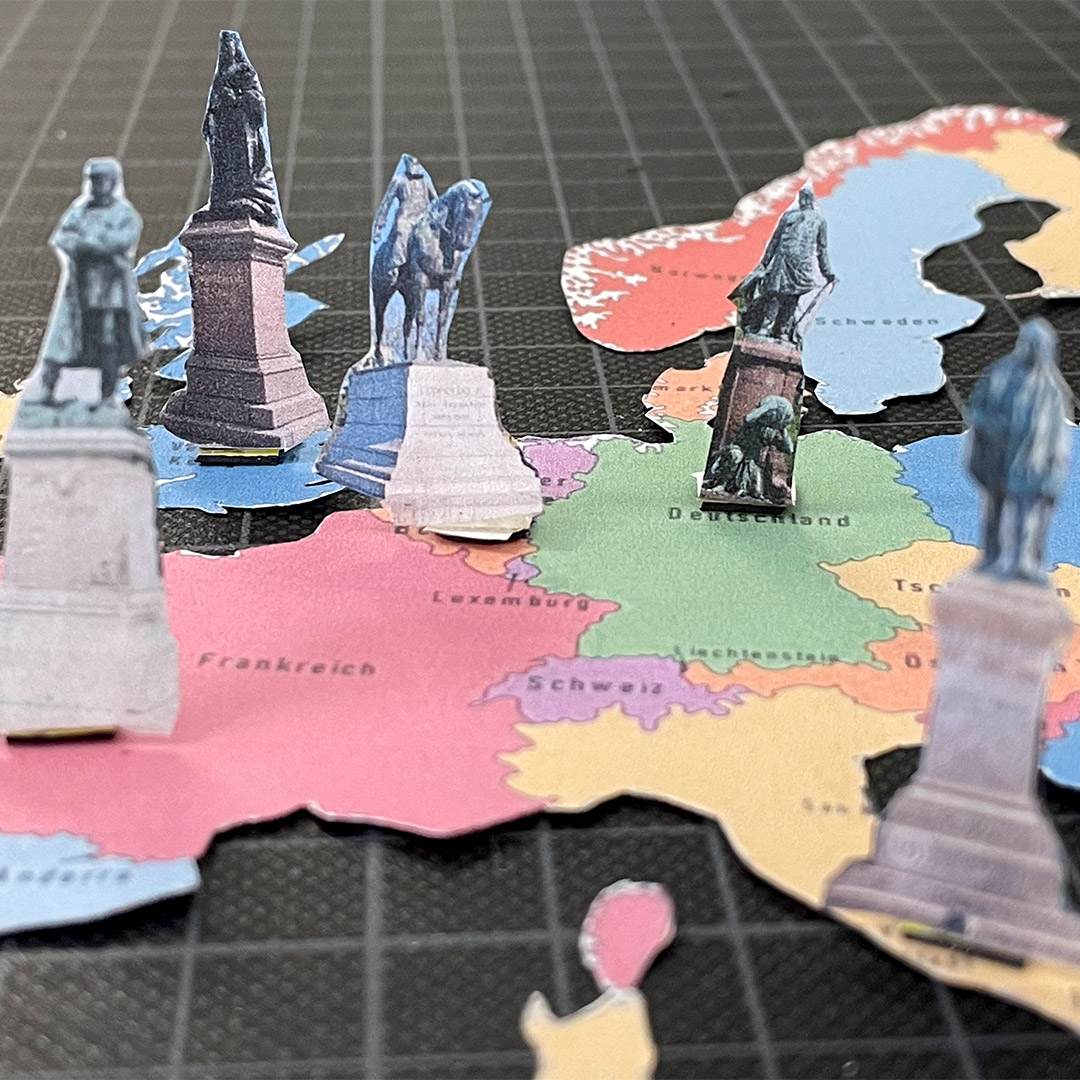“Monumental Shadows” is an ongoing series of participatory art projects in public space. The focus is on the examination of colonial traces in today’s culture of remembrance. More information and images can be found on the project’s own website: monumental-shadows.net
To kick off the project in 2021, Various & Gould, together with Colonial Neighbours (SAVVY Contemporary) and other artists, wrapped the Berlin Bismarck National Monument in paper over a period of weeks and then symbolically removed this wrapping from the pedestal.
Curated by Lynhan Balatbat-Helbock, the pilot project was divided into four parts, so-called “Shadows”: Intervention, Performance, Workshop and Panel. Other participating artists included Daniela Medina Poch, Juan Pablo García Sossa, Thomias Radin, Jumọke Adeyanju, Natisa Exocée Kasongo and Delawhere. In the various formats, participants have addressed the traces and effects of colonialism up to the present day.
Various & Gould and cultural manager Noah Anderson are currently working on continuing the project series together with partner initiatives in other cities and countries.
